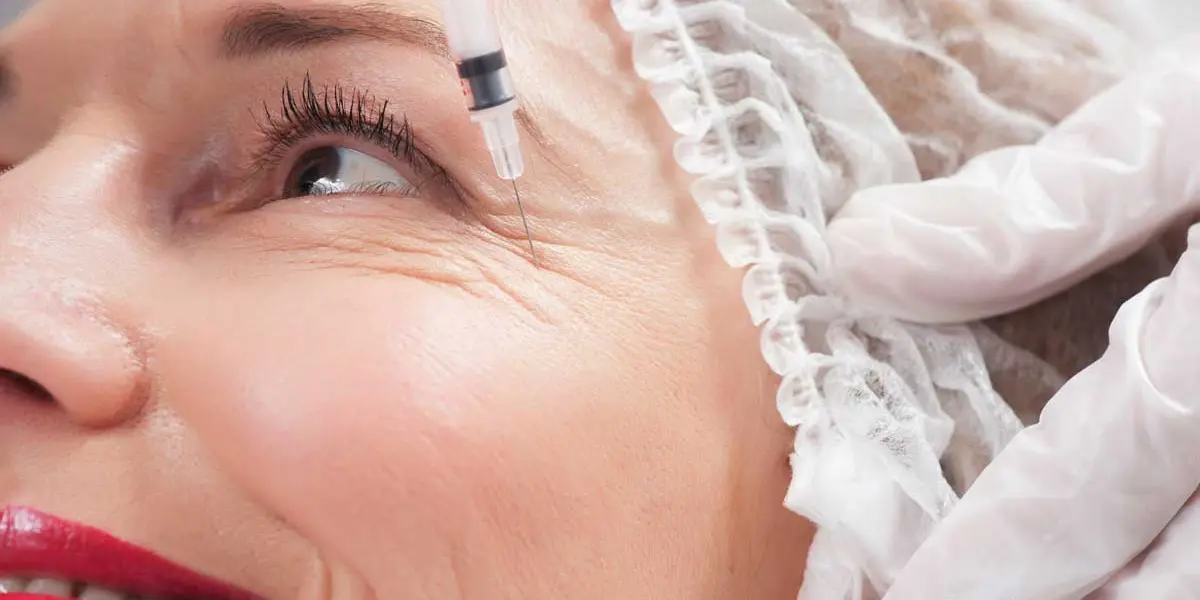Common Botox Mistakes
This article is referring to Botox®, Xeomin®, or Dysport®.I will collectively call these BTX.
We will go over a brief overview of BTX, the top mistakes most inexperienced injectors make, and the proper use of BTX.
BTX is a neurotoxin that temporarily blocks the signal from a nerve to a muscle. We can think of BTX as softening wrinkles, and that is it’s principal use, but I like to think of BTX as being designed to make one’s appearance more attractive. And this is where many BTX injectors make their first mistake.
Botox® was first FDA approved for the wrinkles between the eyes (Glabella or the 11’s) in 2002, almost 20 years ago. The dose was 20 Units (we will talk about optimal dosing later).For a little over 10 years, Botox® was only approved by the FDA for the glabella, and doctors learned to use it in other areas such as around the eyes in what we call “off label use”. Off label means a doctor can choose to use an FDA approved medication for a non approved use. The FDA doesn’t regulate the use of a drug by a doctor, they just approve it for manufacture and limit what the manufacturer can say about their drug.
Experience showed that if we treated the glabella with proper dosing of BTX, and the crow’s feet with BTX, the forehead didn’t require much BTX at all because of opposing muscle dynamics.
Muscles of the upper face either lift up, or depress down (and a little bit squeezing together).The lifter muscle stands alone and is called the Frontalis muscle.
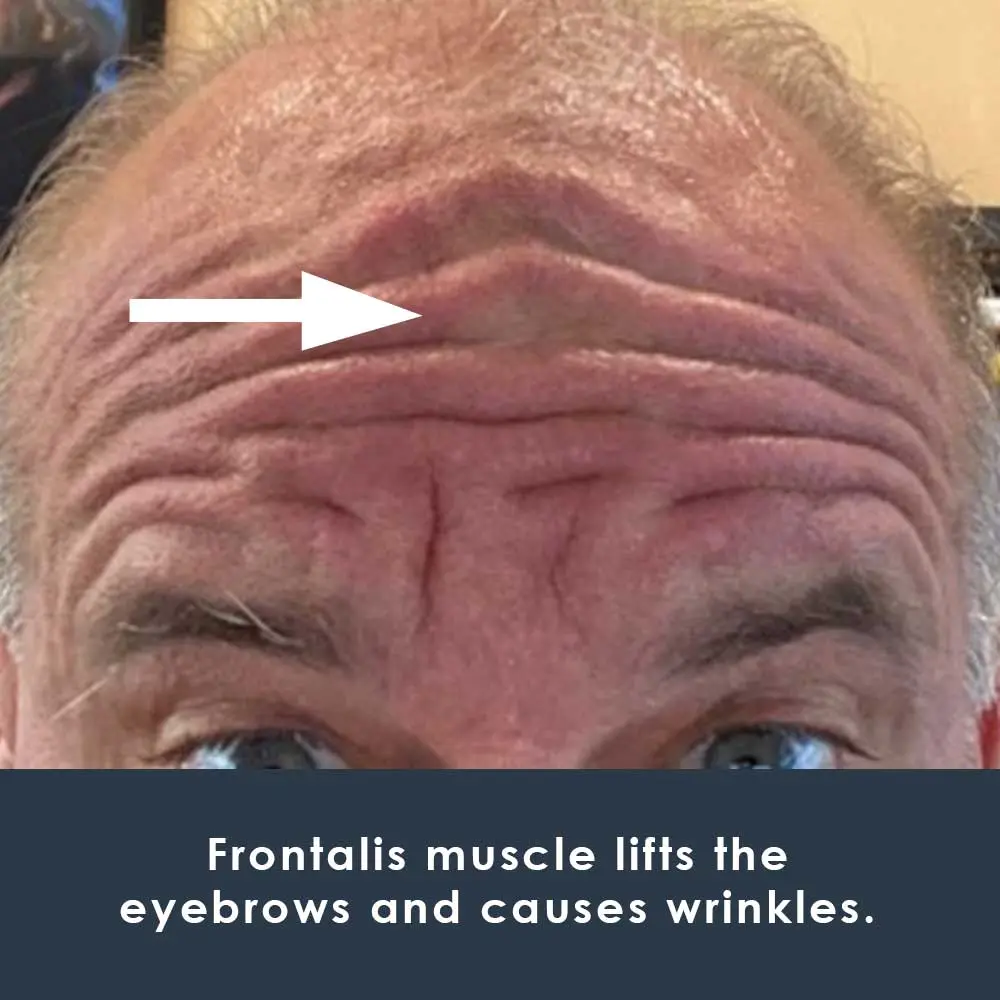
The depressor muscles are around the eyes and they lower the brow (procerus, depressor supercilli, corrugator supercilli, and orbicularis oculi).


We learned how to weaken the muscles that lower the brow causing an angry, sad or tired appearance, and then minimized treating the frontalis muscle that would lift the eyebrow and create a fresh, awake, more attractive brow.
So where is the mistake that we are seeing by BTX injectors?
In 2013, the FDA approved Botox® was FDA approved for crow’s feet or wrinkles around the eyes when smiling. That dose was 24 units. This what we already were doing for 10 years.
And then……….
In 2017 the FDA approved Botox® for the forehead wrinkles at 20 units.
So the FDA approved dose for Botox® is 20 glabella, 24 crow’s feet, and20 units forehead for a total of 64 units.
Here is the problem. Most injectors are trained in “on label” or FDA approved dosages. The FDA approval was based on studies that the manufacturer did to paralyze the muscle, but the dosages were not tested to see what looked the most attractive.
20 Units of BTX is way too much BTX for the forehead! And 20 units of BTX for the glabella is on the light side for most people.
When an injector uses 20 units glabella, 20 units forehead and 24 to the crow’s feet they get a very unhappy patient who has a dropped brow. It feels like the eyes are swollen because the patient cannot raise their eyes. They look less attractive, tired, angry, with a heavy but totally smooth forehead.
The forehead wrinkles are gone, but they look worse.
Any injector who was trained after 2017 was trained on this over dosing of the forehead and underdosing of the glabella. So when the practice on patients they quickly realize that this is not a good look, and they cut all three areas dosage in half.
So now they are still overdosing the forehead, and even more so underdosing the glabella, and while the dropped brow isn’t as bad, the forehead is relatively smooth.
So what is the right way to treat forehead lines?
Stay the heck off of the forehead (at first) and try to get it smooth by muscle balance.
The reason we have lines around our eyes is that we are constantly squeezing, squinting, furrowing our face. And these are muscles that depress the brow, so the forehead has to work hard to lift the brow so you can see.
But let’s see what happens if we treat the underlying cause of forehead lines by staying off the forehead and only treating the muscles that lower the brow.
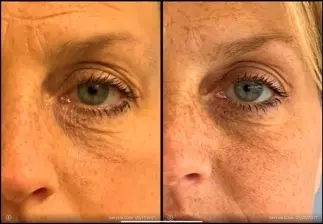
The patient will look more attractive if we avoid the forehead which is the only lifting muscle of the upper face.
Even when the only concern is the forehead lines, proper BTX is carried out by treating the depressor muscles and avoiding the forehead.
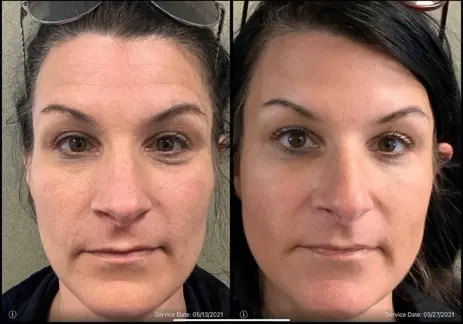
Many people have very heavy eyelids, and a common mistake is to focus on the forehead lines at the expense of the brow position. When someone has “dermatochalasis” or droopy eyelid skin, BTX in the forehead will soften the forehead but it will drop the eyelid down so much the person will have a hard time seeing and look very tired.
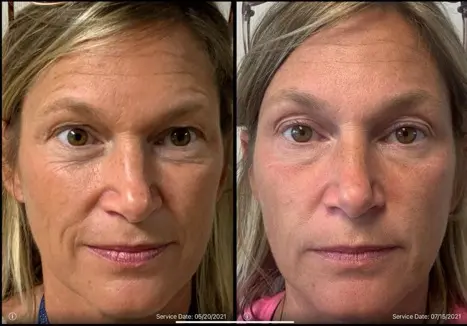

Biggest mistakes most BTX injectors make:
1: Treating the forehead lines by injecting directly into the forehead.
This leads to a smooth forehead, but a lower placed eyebrow.Treating the forehead with as little as 8 Units of BTX lowers the brow a little over a millimeter.
Proper BTX for the forehead is staying off the forehead on the very first visit and treating the depressor muscles (glabella and crow’s feet) and allowing the brow to lift naturally.If lines in the forehead remain, and it is ok if the brow falls a bit, then a small amount of BTX (4-10 units) can be used intradermally (into the skin targeting only superficial fibers).
If the brow lift is more attractive than a smooth forehead, then just leave the forehead alone, it will get better and better with each successive treatment.Proper BTX calls for staging the forehead on the initial evaluation.
2:Undertreating the glabella (11’s).
The FDA dosage is 20 units, which is too light for most people initially.Proper BTX calls for 25-35 units for the glabella in women and 30-40 units in men.Under treatment still works, but you will not get as much brow lift, and the muscle will have less atrophy.By completely blocking this undesirable muscle (that makes you look angry or tired) it will shrink over time and require less BTX less often.
3:Skipping the crow’s feet.
The orbicularis muscle is the one that surrounds your eye.The upper portion of the muscle pulls the eyebrow down.By weakening this muscle, the eyebrow lifts.Proper BTX calls for 10-15 units each side of the crow’s feet.
4:Over treating the forehead.
The FDA dose of Botox® for the forehead is 20 units.That is way too much for most people.20 units will definitely work to smooth the forehead, but it will lead to an expressionless, flat, droopy forehead.
Proper BTX calls for 0-10 units in most women, and 0-16 units in most men.
5:Treating the glabella without stabilizing the lateral brow
The 11’s are the most popular area for BTX.By treating this area, some of the lifting frontalis muscle will get treatment.
Then when you go to raise your eyebrows, the center will be partly paralyzed, and the lateral brow will lift in a weird fashion creating what we call the “Spock Brow” (Star Trek reference).
If just the glabella is to be treated, proper BTX calls for a stabilizing dose (3-5 units) at the tail or lateral part of each eyebrow.This prevents the unnatural BTX look.


